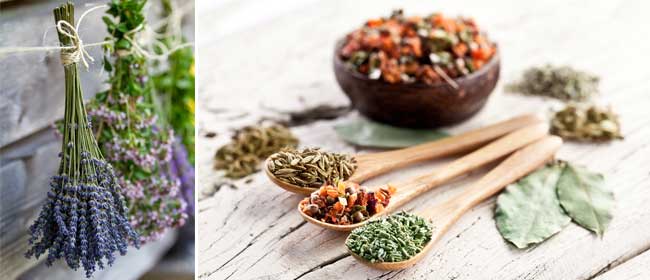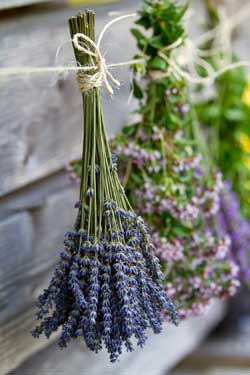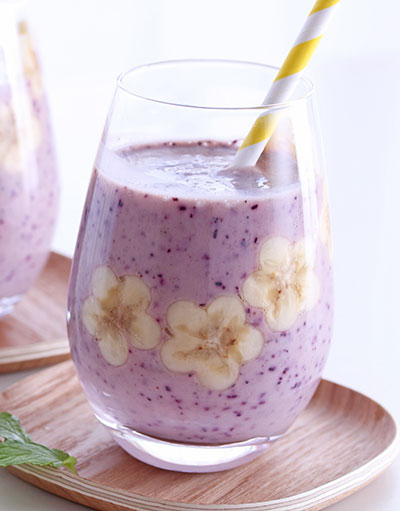 Pack the flavours of your herb garden into a jar and give them to friends and family as gifts, writes editor Jane Wrigglesworth.
Pack the flavours of your herb garden into a jar and give them to friends and family as gifts, writes editor Jane Wrigglesworth.
When it comes to taste, there’s no right or wrong way to mix herbs. You can customise any herb blend recipe to suit your own taste buds. You can simply use dried herbs bought from a supermarket or health store, or you can use herbs grown in your own backyard.
When to pick herbs for drying
If picking herbs from your own garden, when you pick them can make all the difference between an ordinary flavour and an extraordinary one. If you’re collecting herbs to dry and store, pick them just before flowering. The essential oils that give herbs their aromatic flavour are at their peak at this time.
Pick in the morning, after any dew has dried. During the heat of the day the essential oils diminish somewhat as they become exposed to heat and light.
If picking the flowers for use, keep in mind that they have their highest oil concentration after flower buds appear but before they open.
 Cleaning and drying your herbs
Cleaning and drying your herbs
If your herbs are reasonably clean after picking, don’t wet them. Just brush the leaves gently with your fingers to remove any dust or dirt. Discard any dead or damaged foliage, then tie the stems in small bunches and hang upside down in a warm, airy place away from sunlight. Make sure it’s reasonably warm. In cool spots, herbs like basil, tarragon and mint attract mould.
Check the herbs every day or so until they have completely dried – when the leaves are brittle and crumble easily. But don’t crush the other leaves until you’re ready to use them as the essential oils will begin to evaporate. Store in an airtight jar in a cool, dry place out of sunlight.
Which herbs can be dried?
Just about any herb can be dried although some fair better than others. Parsley, basil and chives for example are far more tastier when used fresh. On the other hand, the flavour intensity of mint, oregano, rosemary, bay leaves, sage and thyme increase after drying.
As a general rule of thumb, use only a third of the quantity of dried leaves when substituting for fresh leaves.
HERB POWDER
In her famous reference Mrs Beeton’s Book of Household Management (1861), Mrs Beeton wrote about the herb savory as such: “This we find described by Columella, a voluminous Roman writer on agriculture, as an odoriferous herb, which, ‘in the brave days of old,’ entered into the seasoning of nearly every dish.” She then offered her recipe for Herb Powder for Flavouring, “for when fresh herbs are not obtainable”.
The original recipe includes:
1 oz of dried lemon thyme
1 oz of dried winter savory
1 oz of dried sweet marjoram and basil
2 oz of dried parsley
1 oz of dried lemon peel
Prepare and dry the herbs by recipe No. 445; pick the leaves from the stalks, pound them, and sift them through a hair-sieve; mix in the above proportions, and keep in glass bottles, carefully excluding the air. This, we think, a far better method of keeping herbs, as the flavour and fragrance do not evaporate so much as when they are merely put in paper bags. Preparing them in this way, you have them ready for use at a moment’s notice. Mint, sage, parsley, etc, dried, pounded, and each put into separate bottles, will be found very useful in winter.
LEMON HERB SEASONING
One of my own, I find this herb mix goes with many things – seafood, chicken, roast potatoes and veggies, and salads.
You can buy onion flakes from the supermarket, or you can make your own. Peel and finely chop onions, spread onto an oven tray and place in an 80 deg C (180 deg F) oven until dry and brittle (4-6 hours). The onions are ready when they crumble easily between your fingers. Keep an eye on them towards the end of baking so they don’t turn brown. Allow onions to cool then grind in a food processor, coffee grinder or mortar and pestle. Store in an airtight container. One medium onion yields about 3 tablespoons of dried onion flakes – and they are really tasty. Garlic is dried in the same way.
You can collect your own celery seeds too. The seeds sold in the shops are taken from wild celery rather than the domesticated celery we grow in our gardens (you can buy wild celery from Italian Seeds Pronto) although you can use seed from ordinary celery too. Lovage seed is also a good substitute.
Ingredients
5 tablespoons dried basil
3 ½ tablespoons dried oregano
2 tablespoons dried onion flakes
half teaspoon garlic powder
1 ½ tablespoons celery seed
half to 1 tablespoon finely ground black pepper
half teaspoon finely grated lemon rind
Grind basil and oregano roughly with a mortar and pestle or more finely in a food processor. Transfer to a small bowl and add remaining ingredients. Mix together then store in an airtight container in a cool, dry place.
HERBES DE PROVENCE
This is a mixture of dried herbs typical of Provence in France. It’s often sold in terracotta jars, which make lovely gifts. The basic recipe includes thyme, rosemary, lavender flowers, marjoram and savory, but modern recipes add many more herbs for a more robust flavour. Orange zest is sometimes used too. Sprinkle the herbs into omelettes and stews or over meat, fish and poultry before cooking. Or mix with vinegar, oil and a little Dijon mustard to make a salad dressing.
Ingredients
2 teaspoons dried thyme
1 teaspoon dried rosemary
1 teaspoon dried lavender flowers
2 teaspoons dried sweet marjoram
1 teaspoon summer savory
1 teaspoon dried oregano
1 teaspoon dried mint
2 teaspoons dried basil
1 teaspoon dried sage leaves
1 teaspoon fennel seeds
Place herbs in a food processor and whizz until blended. Store in an airtight container.
SUBSTITUTE SALT HERB MIX
Fennel seeds are collected from midsummer to autumn when the flower heads change from yellow-green to brown. Snip off a seed head and place it in a paper bag to catch any seeds that fall. Tie the bag closed. Put the bag in a warm, dry room and allow the seeds to dry completely. While still in the bag, shake the seed head to dislodge the seeds. Dill seed is also ready to harvest when the seeds turn brown.
This mix is a great substitute for salt – just sprinkle it over your food before eating.
Ingredients
1 teaspoon fennel seeds
1 teaspoon dill seeds
2 teaspoons celery seeds
1 dried bay leaf
Grind herbs in a food processor or mortar and pestle.
 My Favourites
My Favourites









Speak Your Mind